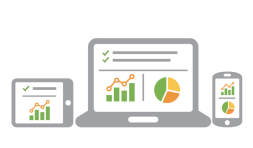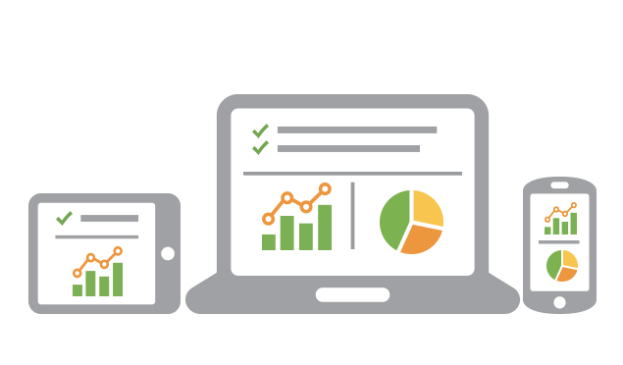Hi, I’m Carl, the newest Business Intelligence Developer in the Business Intelligence team at TSG, and this is the first of (hopefully… maybe…) many blogs from myself on the wonderful world of BI. I also tweet about BI on a regular basis, so if that’s your sort of thing you can follow me.
I may have only been with TSG since November 2017, but I bring plenty of experience to the table (database joke, ha?) in reporting, data analysis and business intelligence, ensuring businesses get the data they need in a fashion they understand, to supporting them in making important decisions.
Anyway, less about me, on with the blog!
There is a battle raging in the Business Intelligence sector now, with two heavy hitters slugging it out to be crowned the King of BI™. In the left corner, we have Qlik Sense, developed by Sweden’s very own Qlik. In the right corner, we’ve got Power BI from everyone’s favourite enterprise IT provider, Microsoft (with whom we hold 8 Gold Competencies). Data literacy is very much a 2018 hot topic, so implementing the right Business Intelligence solution for your business is crucial.
Since I’m new to TSG and have previously used both Qlik and Microsoft’s last-gen BI solutions (QlikView/SSRS), as well as many others on the market (Crystal/Business Objects), I’m in a good position to compare both solutions and share my thoughts!
Here we go…
Qlik Sense

Qlik Sense is Qlik’s next-generation Business Intelligence platform utilising the same QIX engine and scripting language as QlikView, however with a brand new responsive, HTML5 front end, which is perfect for beautiful-looking visualisations, as well as plenty of improvements in the backend for developers like me!
Explore all of your data
Qlik Sense prides itself on its in-memory QIX associative engine, a patented technology which allows you to explore your data without limits. Other BI solutions are one-directional and query-based, i.e. “show me the top salesperson in the North East, please”, which will give you exactly what you want. However, Qlik Sense is different as it allows you to query in any direction.
With Qlik Sense, no data is thrown away, so in the example of “top salesperson in North East”, results that do not answer this query are still shown but in grey, rather than not being displayed at all. This is the power of “green, white and grey” and is incredibly powerful for data discovery… i.e. when you click on a value to isolate it, it goes green, anything associated stays white and anything that is excluded goes grey.
 The Qlik Sense front end is very user-friendly due to the in-memory engine, performance is super-fast as when selections are made, on-the-fly calculation and aggregation instantly updates all analytics with each click of your mouse or, on an iPad, with the prod of your finger. Filters can be applied to multiple graphs simultaneously, in an intuitive manner, which are then applied globally to your entire app. The “brilliant black bar” at the top of the Qlik Sense screen keeps track of what you have selected, and allows you to easily change filters or pose another question of your data.
The Qlik Sense front end is very user-friendly due to the in-memory engine, performance is super-fast as when selections are made, on-the-fly calculation and aggregation instantly updates all analytics with each click of your mouse or, on an iPad, with the prod of your finger. Filters can be applied to multiple graphs simultaneously, in an intuitive manner, which are then applied globally to your entire app. The “brilliant black bar” at the top of the Qlik Sense screen keeps track of what you have selected, and allows you to easily change filters or pose another question of your data.
Bringing together disparate data
Another killer feature of Qlik Sense is the Global Smart Search, which is like Google on steroids for your data. You can search for a combination of filters and then when you select those filters they are applied across the app, meaning data discovery is even faster.
Connecting Qlik Sense to your line-of-business applications, current or legacy data warehouse, or even to a shed load of spreadsheets is all possible, out-of-the-box, with Qlik’s scripting language and an array of connectors for on-premise, cloud or web-based data, using standard protocols such as ODBC, OLE DB or REST.
Qlik’s scripting language allows you to completely transform and join your data into whatever shape is required. There are literally hundreds of functions; everything from pivot, to capitalise, to performing in-depth set analysis to slicing and dicing your data to the nth degree. If scripting isn’t your thing, Qlik Sense provides an array of easy-to-use wizards, such as the Data Manager, which allows you to import and join data without one line of code. Hashtag no coding required.
Should I use Qlik Sense?
If you want a full platform for your business, you have multiple data sources and presently suffer from a series of blind spots in your data, so would be interested in true data discovery, then Qlik Sense could be for you.
Power BI

Many people think that Power BI is Microsoft’s new kid on the block, however it spawned from one of the best programmes ever developed – Excel – as PowerQuery and PowerPivot. It’s now supercharged with an Azure backend and boatloads of new features.
The Microsoft ecosystem
Being a Microsoft product, as you’d expect, Power BI is firmly embedded in the Microsoft ecosystem. It has complete integration with all of Microsoft’s cloud solutions, such as Dynamics and Office 365, and can seamlessly import data from all these solutions via out-of-the-box connectors.
The ability to transform data from source is very powerful, with the ‘Get Data’ process. You can, with a point-and-click interface, quickly change data types, pivot, cleanse, and create new data from your source systems. For more advanced operations, Power BI has its own programming language called DAX, which allows advanced calculations and transformations. It might be a new(er) kid on the block, but it packs a serious punch for data wranglers like myself.
The fastest-growing BI platform
The development team behind Power BI is currently pushing out new features quicker than you can say “where’s my report”, with new releases of the Power BI desktop client published monthly. In the time I’ve been at TSG alone, they’ve released 35 new features (which is astonishing) – from the simple “Bar/column padding control” to the complex “High density sampling for maps based on latitude and longitude”. It’s safe to say Microsoft is investing heavily in its new BI solution, and it’s here to stay.
Power BI is the only product with Natural Language Query capabilities. You simply type a question (i.e. “What was our average transaction value over the past 3 months?”) and Power BI selects a visualisation for you to explore. This goes hand-in-hand with Quick Insights, a series of advanced analytical algorithms developed by Microsoft Research to help you to analyse your data further.
A big selling point of Power BI is the Power BI Service, which is the cloud-based platform where the magic happens. However, if you aren’t ready for the cloud, Power BI can be deployed on-premise, with the Power BI Report Server. Your rich, interactive reports are published to the Power BI Service, and then can be shared with end users via Office 365 groups, meaning you can deliver reports and dashboards to the right people, first time, in a repeatable, auditable, tightly-controlled manner. Reports and dashboards published to the Power BI Service can be reconfigured for mobile use too, meaning you can take your data with you, while on the road.
Should I use Power BI?
If you are heavily invested in the Microsoft ecosystem, and would like reports, dashboards and analysis from reasonably straightforward data sources, then Power BI could be for you.
When I first started using Power BI, due to my knowledge of Qlik Sense, I was disappointed with the filtering capabilities. Qlik Sense filters work across an entire “app” – i.e. a series of reports. However, in Power BI, filters are only available per visualisation, per report page, not globally. This slows down the discovery of data, and initially felt like a deal breaker to me. Microsoft has acknowledged this issue, as the lack of a global search is the most upvoted feature request. I’m sure Microsoft will rectify this missing feature, as it has finally acknowledged the deficiency, in the coming releases… hopefully!
In Conclusion…
Originally, this blog was going to be a comparison between the two platforms, concluding with me hailing a winner. However, the more I’ve learned and developed solutions with the products, the more I find this to be quite a difficult question to answer. Like comparing apples and oranges, both are fruits (but tangerines are better). Or, as Stu Wannop, TSG’s Business Intelligence Specialist, says… “It’s like asking who would win in a fight between a gorilla and a shark – it depends if it’s on land or in the sea!”
Both solutions offer beautiful, dynamic dashboards that everyone from the Operational Manager to the CFO would be wowed with, however my personal preference is Qlik Sense. Qlik Sense trumps Power BI with features such as governed data, the associative engine and mobile capabilities. However, Power BI’s cloud offerings are more mature and scalable than Qlik Sense, as its built on top of Azure, and integrates brilliantly with Office 365.
The future of BI
Qlik shouldn’t rest on its laurels, as Microsoft is quickly catching up, especially in the cloud and advanced analytics space, and if/when Microsoft nails the Power BI global filtering, its functionality set could outpace Qlik Sense – it’s an interesting time in the BI world!
You frankly can’t lose if you’re implementing either of these solutions, and TSG can assist you with all of your Business Intelligence requirements, because getting the data you need, to answer the questions you have, in the format you understand, is imperative in a modern business.
The only true way to pick the King of BI™ is to find that shark and gorilla..
***
The above article was originally posted on my employers blog – see here
